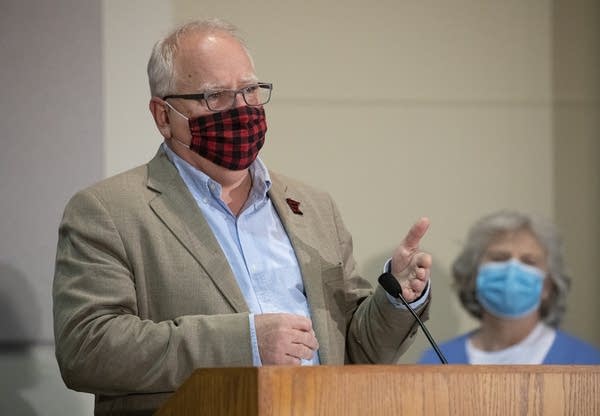July 22 update on COVID-19 in MN: Walz unveils statewide mask order

Gov. Tim Walz announces a statewide order Wednesday, requiring Minnesotans to wear masks in public indoor gathering spaces. The statewide order is set to take effect Saturday.
Christine T. Nguyen | MPR News
Go Deeper.
Create an account or log in to save stories.
Like this?
Thanks for liking this story! We have added it to a list of your favorite stories.


